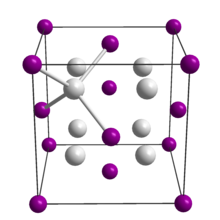
| |
| Names | |
|---|---|
| Other names
Disodium telluride; hydrotelluric acid, sodium salt
| |
| Identifiers | |
3D model (JSmol)
|
|
| ECHA InfoCard | 100.031.629 |
| EC Number |
|
PubChem CID
|
|
CompTox Dashboard (EPA)
|
|
| |
| |
| Properties | |
| Na2Te | |
| Molar mass | 173.58 g/mol |
| Appearance | white powder, hygroscopic |
| Density | 2.90 g/cm3, solid |
| Melting point | 953 °C (1,747 °F; 1,226 K) |
| very soluble | |
| Hazards | |
| Occupational safety and health (OHS/OSH): | |
Main hazards
|
In contact with water releases flammable gas |
| GHS labelling:[1] | |
 
| |
| Warning | |
| H261, H302+H312+H332, H315, H319 | |
| P261, P264, P270, P271, P280, P302+P352, P304+P340, P305+P351+P338, P312, P330, P335+P334, P362, P370+P378, P402+P404, P501 | |
| NFPA 704 (fire diamond) | |
| Related compounds | |
Other anions
|
Sodium oxide Sodium sulfide Sodium selenide Sodium polonide |
Other cations
|
Hydrogen telluride Lithium telluride Potassium telluride Rubidium telluride Caesium telluride |
Except where otherwise noted, data are given for materials in their standard state (at 25 °C [77 °F], 100 kPa).
| |
Sodium telluride is the chemical compound with the formula Na2Te. This salt is the conjugate base of the thermally unstable acid hydrogen telluride, but it is usually prepared by reduction of tellurium with sodium. Na2Te is a challenging material to handle because it is very sensitive to air. Air oxidizes it initially to polytellurides, which have the formula Na2Tex (x > 1), and ultimately Te metal. Samples of Na2Te, which are colourless when absolutely pure, generally appear purple or dark gray due to the effects of air oxidation.
